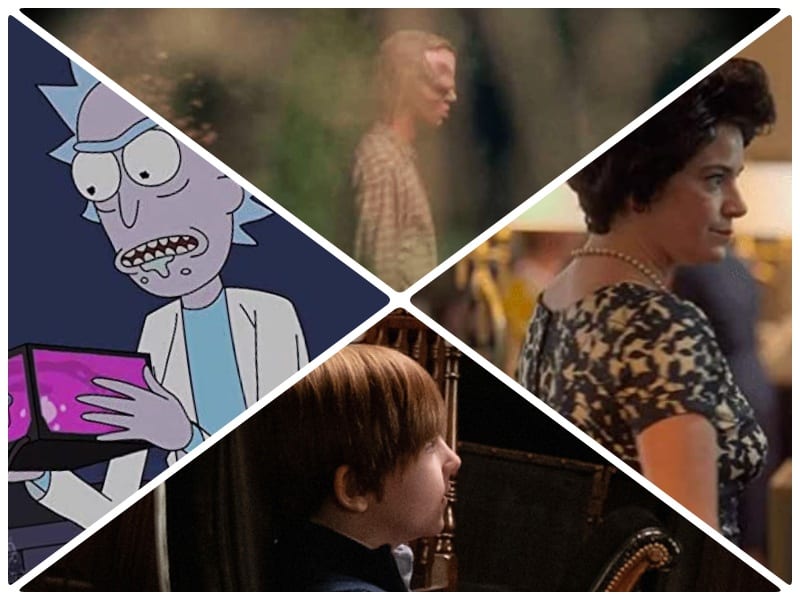
On the beloved space Western series Firefly, there are creatures called reavers, introduced as the worst beings alive. These homicidal cannibal pirates rape and pillage their way through the universe Joss Whedon created, striking fear in the hearts of all who encounter them. However, when Serenity, the movie based on the series, came out, it was revealed who had created these terrifying flesh-eating and flesh-wearing creatures: humans.
Humans experimented on other humans and made monsters out of them. The movie makes it clear that humans are to blame for the very horrors that have been unleashed onto their population. This reveal was both shocking and smart. Throughout the years, this narrative tactic, a kind of “gotcha” approach that forces humans to confront their own inner monsters, has been used on other sci-fi and fantasy series often enough that it has become a trope, and a very effective one at that.
In his book about monsters, anthropologist David D. Gilmore explains, “The mind needs monsters” because monsters “embody all that is dangerous and horrible in the human imagination.” In literature and film, they are projections of our guilt and fear and dark desires, and we are therefore always positioned as their adversaries. In separating them from our own bodies, we are able to preserve the moral high ground. Our binary logic about humans and monsters is that there is a clear and definite line of demarcation separating the two. We are told there are distinct behavioral and moral differences that separate us: humans are intelligent and compassionate, and monsters are irrational and violent.
When we see vampires, demons, and other monsters-of-the-week attacking people in speculative fiction, the appeal is the temporary nature of the fright cushioned, always, by the knowledge that these creatures are fictional and the danger isn’t real. When the “humans are the real monsters” trope is employed on a genre show, it is distinctly unsettling because it pierces through this sense of security.
The encroachment of reality is troubling for many reasons. When there is overlap, when humans aren’t the intelligent and compassionate people we think we are, but rather reavers, the scare becomes physical and psychological. It forces us to reevaluate what it means to even be human. After all, what does it mean to be human if humans can be monsters, too? This kind of peeling back of our skin to reveal the monster within is what makes true crime such a popular genre, and it’s what makes this trope so scary. Humans are the monsters we don’t see coming — hidden in plain sight, looking just like us — which makes them the scariest monsters of all.
Below, I take a look at some genre shows that used this trope to shake up their formulas and give their viewers a good scare.
The X-Files

According to NME, the X-Files episode “Home” is “widely regarded as the scariest ever episode” of the show and was so horrifying it was banned from re-airing. People who watched it live still have lingering scars from doing so — in her Reddit AMA, Mindy Kaling called it “the scariest hour of television I’ve ever watched.” The villains who had everyone so spooked weren’t the show’s usual monsters-of-the-week (aliens, parasitic worms, Cigarette Smoking Man) but the Peacock family, inbred brothers who live with their mother/lover in a decrepit rural electricity-less home in Pennsylvania.
In the episode, which was broadcast in October 1996, Agents Mulder and Scully are called to investigate after a deformed infant corpse has been found buried in a field. Despite the local sheriff’s protestations that the brothers are too “feeble” to be involved in a crime, the agents retrace a path to the Peacocks, a family of killers whose incestuous behavior has led to their having obscene bodily deformities and desensitization from pain (which the sheriff learns the hard way when he tries to defend both himself and his wife from their fatal home invasion). The New York Times did a Q&A with the episode’s writers, Glen Morgan and James Wong, where the duo recalled a note from their producer: “You guys are sick!”
“Home” opens with the scene of the inbred brothers burying the newborn baby alive shortly after delivering it from their mother and only gets sicker. Case in point: Ma Peacock, who we learn is the matriarch of the family and a willing participant in the incest, is just a limbless body the brothers keep on a sliding cart under a bed. “What we’re witnessing Scully,” Mulder explains, “is undiluted animal behavior, mankind absent its own creation of civilization, technology, and information, regressed to an almost prehistoric state obeying only the often savage laws of nature.” In this episode, seeing humans embody the characteristics we associate with the show’s monsters — ruthless, uncivilized, sexually perverse — we are horrified. Our understanding of humanity as a fixed set of ideals and traits is broken, and that’s the scariest thing of all.
Lovecraft Country

It can be said that Lovecraft Country sets the tone for humans as monsters in its very first episode, “Sundown.” The tensest, scariest scenes aren’t those where the main characters get attacked by many-eyed worm-like monsters but rather a car chase in which they are chased out of town by a racist cop who threatens to lynch them if they linger past sundown.
But the most explicit enactment of the trope comes in the HBO show’s fifth episode, “Strange Case,” when a Freaky Friday-style body swap allows Ruby (Wunmi Mosaku) to experience life in the skin of a white woman. She is instantly treated better, protected by police, respected by fellow pedestrians, and generally allowed to move through the world in peace, which all comes in violent contrast to how she was treated in her real skin, her Black skin.
Her newfound white privilege is a symptom of the show’s true Big Bad: racism. As the official podcast for the HBO show explains, “In this story, the monsters are all around us, living on from generation to generation.” Although Ruby’s magic-induced transformation is bloody and messy and leaves her covered in dead skin that she must shed to re-emerge as her true self, she is not the monster of the episode. Using body transformation horror and some racial commentary, the show turns Ruby into a monster (a white woman) so that she can blend in with the other monsters (white people) around her.
This includes her white boss, who is kind to her in her white body but tries to sexually assault her black coworker in an alley when he’s out of sight from Ruby and the other white employees. Ruby, peering from behind a dumpster in an alley, is dismayed to see his own transformation, from mild-mannered manager to vicious assailant. And then, when he doesn’t get his way, his return to a veneer of civility. It’s a cycle of escalation and transformation, which all occurs while he is in his unassuming human body. The message, of course, is that we never know what lies just beneath the skin of the people around us.
Evil
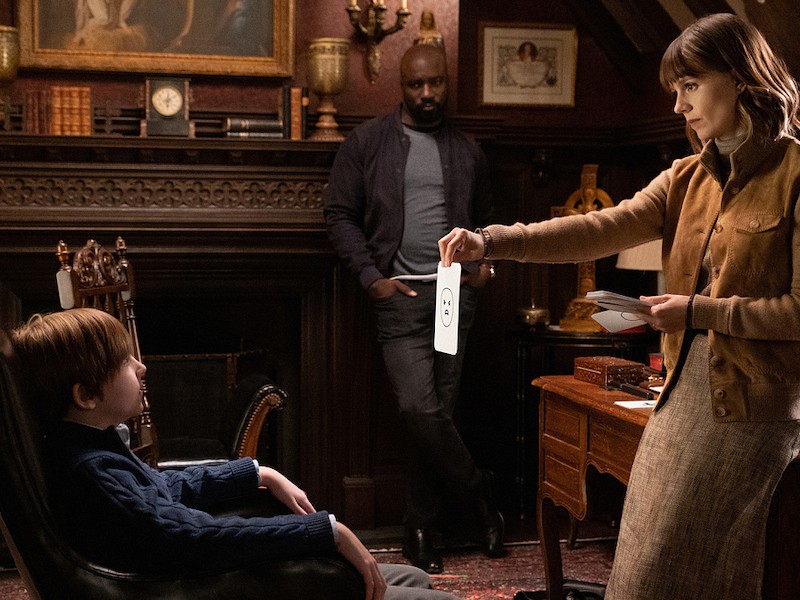
CBS’s Evil is a supernatural procedural that follows the casework of priest-in-training David (Mike Colter), skeptical psychologist Kristen (Katja Herbers), and their tech expert Ben (Aasif Mandvi). In the episode “Rose390,” the team is called by a family to do a psychological and spiritual assessment on their troubled son Eric.
We meet the nine-year-old they are concerned about and learn that he once bit his sister until he drew blood, and another time he poisoned his entire family by putting bleach in their milk just to see how long it would take them to notice. As a precaution, the family has taken to locking every cabinet and the refrigerator to block his access to their food supply. What appeared to be a cookie-cutter house from the outside is more of a prison, once you enter.
The team, which has at this point in the series already encountered a demonically-possessed serial killer, is visibly shaken. The family is at the end of their rope, having been trying to deal with their son for two years, so the team works hard to look for answers, psychological or environmental –Ben thinks metal corrosion in their house could be affecting Eric’s personality, for one possible explanation. It soon becomes very clear, though, that they aren’t dealing with a possessed kid but a psychopath.
When David comes to the house for a consult, he sees Eric sitting calmly by the pool and everything in the air feels tense. He comes closer, and then his face freezes as he realizes Eric has thrown his infant sister into the pool in an attempt to drown her. David is now convinced there is a demon inside of him and asks for an exorcism to be performed on behalf of the family.
The next day, the whole team and a priest make their way to the house and notice police are stationed outside. The mother informs them that Eric has gone missing, but the team quietly puts together what really happened. Eric’s parents killed their own son out of fear of what he would continue to do to his sisters. Tearfully, but never admitting what she did, the mother explains, “I love all of my children equally, but when one of them is in danger, I have to act.”
It is one of the show’s most chilling scenes. The little boy whose actions we were coached into seeing as the monster problem of the episode was outdone by his parents’ monstrous decision to end his life. By the end, both the son and his parents seem to be the most terrifying monsters the show could produce.
Rick and Morty
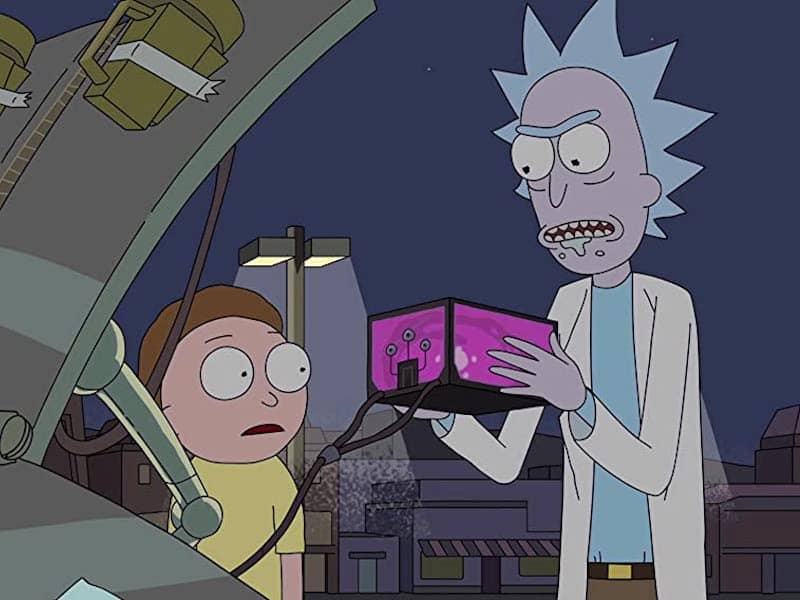
Creator Dan Harmon would probably be the first to assert his animated comedy Rick and Morty isn’t a show to watch for moral guidance. Rick is a genius inventor with almost no ethical boundaries who goes on zany interdimensional adventures with his grandson. The show introduces lots of questionable characters and planets, like the one that has an amusement park with an invincibility shield that allows people to kill each other and come back to life without consequence. But in the Season 2 episode “The Ricks Must Be Crazy,” we learn that Rick is a tyrannical god who gave a planet full of beings life only to exploit it to power his car battery.
As Rick and Morty journey inside the battery and meet the creatures who have developed sentience and relationships and feeling, the scale of Rick’s cruelty becomes even clearer. When Zeep, an alien scientist who lives in Rick’s battery, develops a similar concept of a microverse battery to power his own micro-universe, Rick is offended and compares it to slavery — a criticism Morty had previously leveled at him. They fight, and Rick prevails because he threatens the existence of the microverse full of living beings.
Rick and Morty exit the microverse battery, and Morty, feeling defeated, says he thinks the battery won’t start because of their fight, but Rick knows better and starts the engine. The car is fine. His unfeeling delivery in response to Morty’s bewildered, “I don’t get it” is an encapsulation of how cold and cruel Rick can get: “Of course you don’t. But Zeep did. He knew that once I got back to my car, one of two things was gonna happen: I was gonna have to toss a broken battery, or the battery wouldn’t be broken.” Meaning, either the microverse residents would continue being enslaved and exploited by Rick, or they would cease to exist. “Jesus,” Morty exhales.
“The Ricks Must Be Crazy” is a testament to how humans can become monsters when they suppress the emotional responses that define our humanity — in this case, empathy. Rick’s genius IQ and ineradicable callousness make him the most chaotic and scary person in any universe.
Supernatural
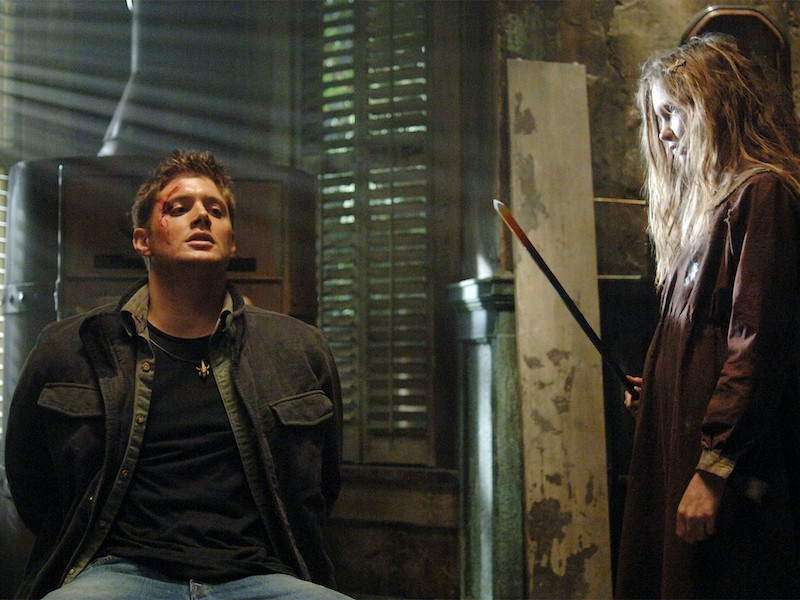
Supernatural has fifteen seasons worth of monsters to pull from, but one of its scariest episodes actually involves the Winchester brothers encountering another family of hunters. In Season 1’s “The Benders,” the brothers are investigating a missing person case when Sam gets kidnapped, and Dean has to figure out what monster took his brother. When he finds Sam, locked in a cage in a creepy rundown farmhouse, Dean realizes what is going on: they’re hunting a monster, but it isn’t supernatural.
It’s a family that hunts other humans for sport. They kidnap people and keep them locked in cages like rats underground until they are ready to hunt, at which point they open their cages and let the victims run out into nearby woods thinking they’re free, only to be brutally pursued.
When Sam, locked in his cage, realizes who is holding him as a hostage, he exclaims, “I’ll be damned, they’re just people.” Just people. People who’ve turned hunting and killing other people into a game. Who keep trophies like a jar full of teeth and a wall of photographs of all the people who’ve died by their hands. Whose only response when asked why they do what they do is “‘cuz it’s fun.”
Given the show’s title, viewers expected there to be some supernatural explanation for why a father, his adult sons, and their younger sister are all indoctrinated into this bloodsport. But as the episode unfolds, it becomes clear that there is no such excuse available for their actions. The mystery and scare of this episode are entwined: we’re looking for something that stalks the night, but we should be looking for evil in the people we see during the day. The trope was employed to make us fear one thing: humanity’s infinite capacity for inhumanity.
The Magicians
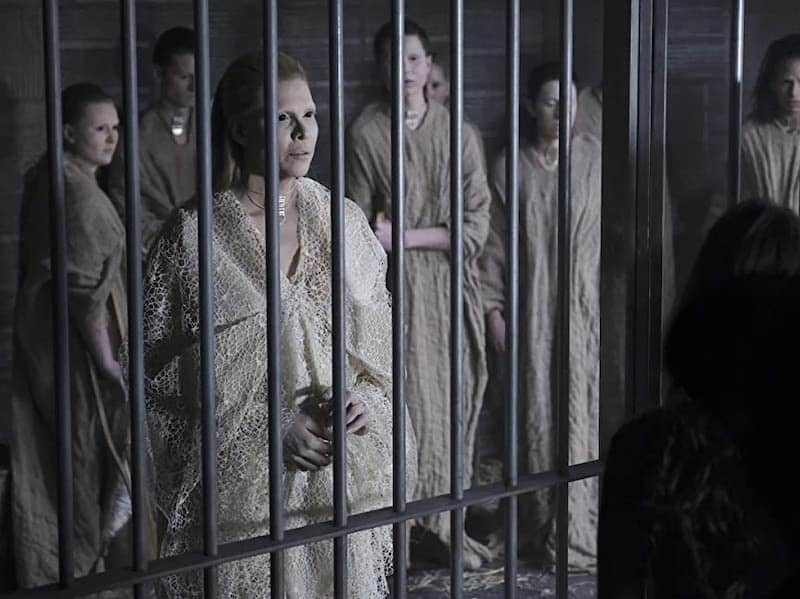
In Season 3, The Magicians introduces Irene McAllister (Jaime Ray Newman), a magician from a wealthy white magician family who is seemingly an ally to the main characters. When Julia (Stella Maeve) needs help curing her friend, she turns to Irene, who offers a magical powder that will help. But when Julia learns what the dust is made of, she’s furious. It turns out, the McAllisters have enslaved generations of fairies and forced them to work as their house servants. They cut off the fairies’ limbs and crush them into bone dust, which they snort like cocaine to strengthen their magical abilities and also to sell for profit.
In another universe, the magical one, Julia’s friends have been attacked by fairies, but in the human world, the magical creatures have been told by the McAllisters that their kind has died out and that enslavement in her home is the only way they’ll have a home. On a series that has showcased the horrors of wrathful gods and a soulless killer beast, this denouement somehow takes the cake. It’s obscene and stomach-churning to watch as this magical race suffers ritualistic abuse from a tyrannical human family who sees their bodies as fuel for their own.
This storyline takes place across multiple episodes, culminating in “The Art of the Deal,” when Julia and Fen work alongside the fairy queen to foment a slave uprising that takes down the entire McAllister slave empire. Under the queen’s guidance, the newly-freed fairies brutally massacre their enslavers while they are toasting their achievements with expensive wine — a sequence that is as close as The Magicians gets to the infamous Red Wedding from Game of Thrones.
The McAllisters went years without being sanctioned for their behavior, justifying slavery and cannibalism in their minds because it imbued them with the most corrupting force there is: power. This arc’s strength comes from the trope’s slow reveal of how sometimes monsters can act more like humans than actual humans. The fairies were not the inherently villainous creatures that Julia’s friends encountered but beings whose actions reflect a violent history with humankind.
The McAllisters were not allies who wanted to democratize access to magic but uber-capitalist villains whose addiction to a classic deadly sin, greed, had warped them into monsters. While we ultimately cheer the family’s demise, thinking about the things they got away with doing, and how long they got away with doing them, is downright haunting.
Doctor Who
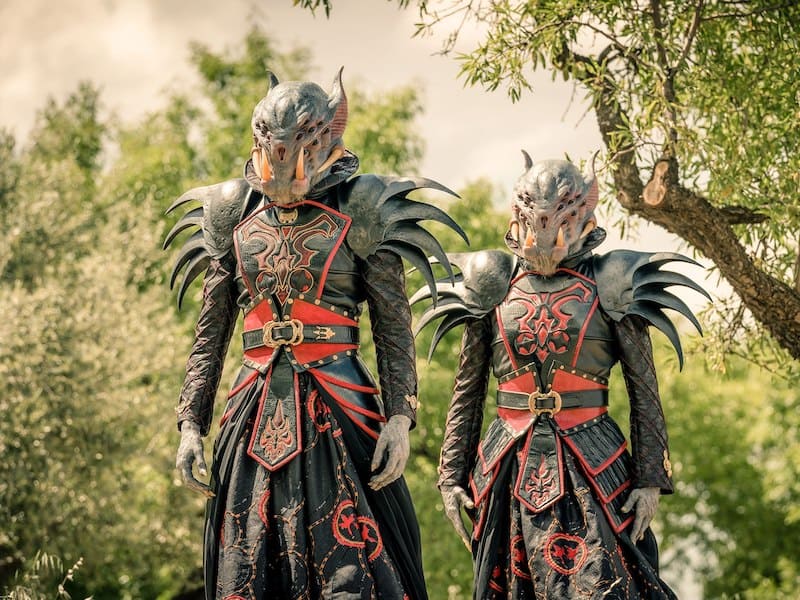
On a show where the titular character, the Doctor, is an alien, other aliens and monsters are obviously going to be more sensitively written. This leaves more room for contrast with the human race, so the horrors of humanity — i.e. the “humans are the real monsters” trope — has become a kind of recurring theme. But there’s a reason Season 11’s “Demons of the Punjab” is considered one of the most poignant episodes of Doctor Who.
In it, the Doctor’s companion, Yaz (Mandip Gill), asks to visit her grandmother during the woman’s youth in India, and they happen to show up on the eve of two big events: Yaz’s grandmother’s wedding, and a war –specifically, the war that ensued after the country was partitioned into India and Pakistan.
While there, they encounter the episode’s alien-of-the-week, the Thijarians, whom the Doctor explains are a dangerous race of assassins. Their harsh battle-ready alien exteriors appear menacing against the warm bucolic backdrop of rural India. When a local holy man who was going to oversee the marriage winds up dead, the Tardis team is prepared to fight. But midway through the episode, we learn that these aliens didn’t kill him and furthermore aren’t here to decimate the human population but instead to bear witness to the way humans decimate each other — millions were either displaced or killed in the aftermath of Britain’s partition of the country.
After their home planet was destroyed, the Thijarians left assassin work behind. “We who returned gave up a hundred generations to sift, to remember the lost dead, the unmourned,” one Thijarian explains. “Now we travel beyond, seeking the unacknowledged dead across all of time and space. This is now the Thijarian mission, to bear witness to those alone. To see, to bear pain, honor life as it passes.”
The episode’s air date appeared consciously timed to Remembrance Day in the UK in 2018, and its message feels particularly poignant now when over one million people across the globe have died due to COVID-19. Their deaths, due in part to restrictions on public gatherings like funerals and to the sheer volume of lives lost, have been largely unmourned.
The monsters of the episode — an islamophobic brother who is found out to be behind the holy man’s murder and the warriors who decide to battle each other over the partition — are shown unflinchingly in an uncharacteristically bleak ending for the series. Although the Doctor regularly meddles in other people’s lives, she cannot interfere with fixed historical points and can therefore only turn her back as the humans begin to wage war against themselves. From the vantage point of the aliens, we are able to see both how monstrous we can be to each other and how the violence of war can be compounded when its casualties go unacknowledged.
Honorable mention goes to another Season 11 episode: “Arachnids in the UK,” in which the actions of a billionaire investor and errant scientific facility create super-sized spiders that wreak havoc on the UK and serve as an urgent — if heavy-handed — reminder that our rampant ecological pollution has consequences.
Related Topics: Fantasy, Lovecraft Country, Rick and Morty, Sci-Fi, supernatural, The X-Files, Tropes

